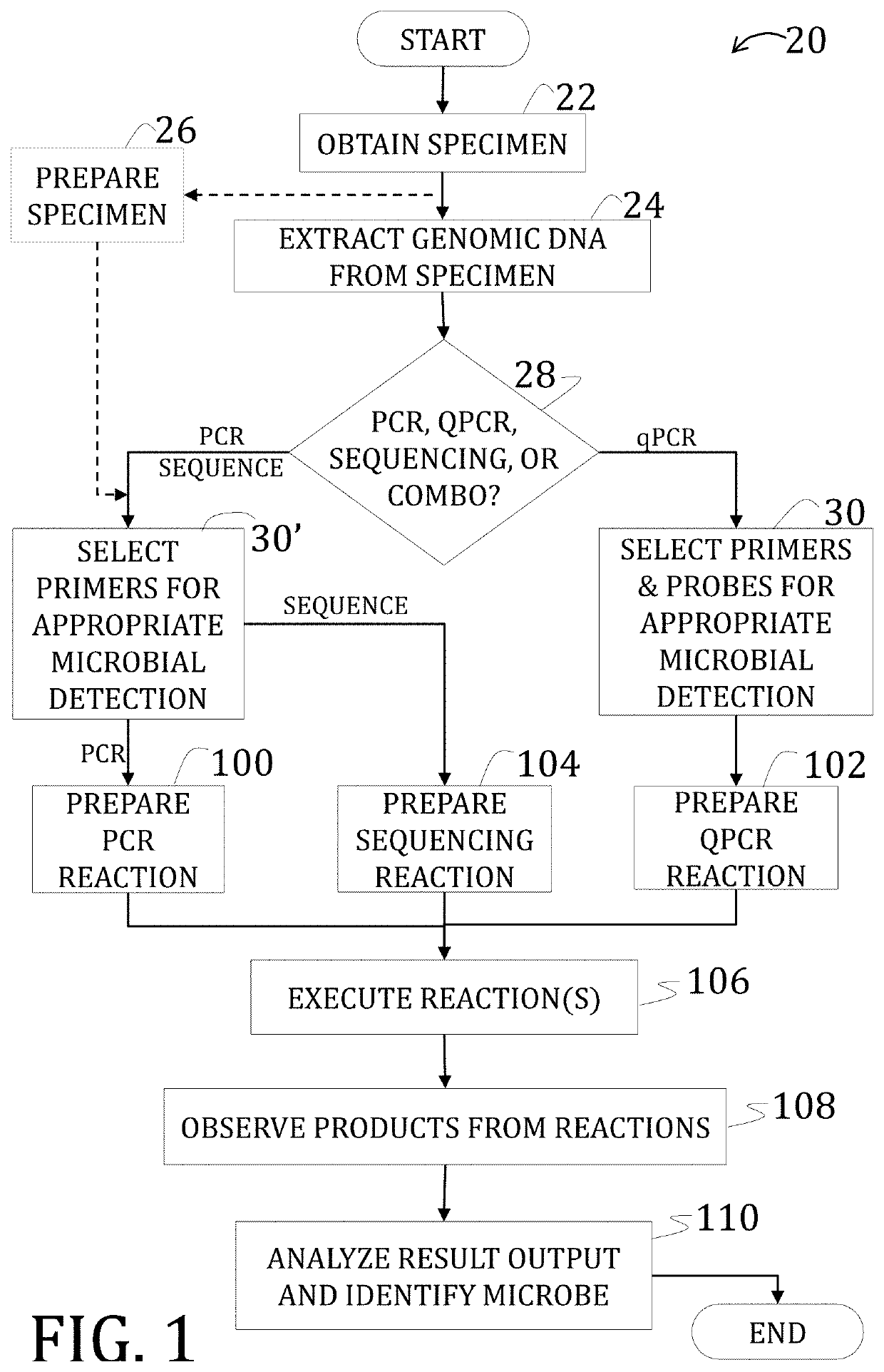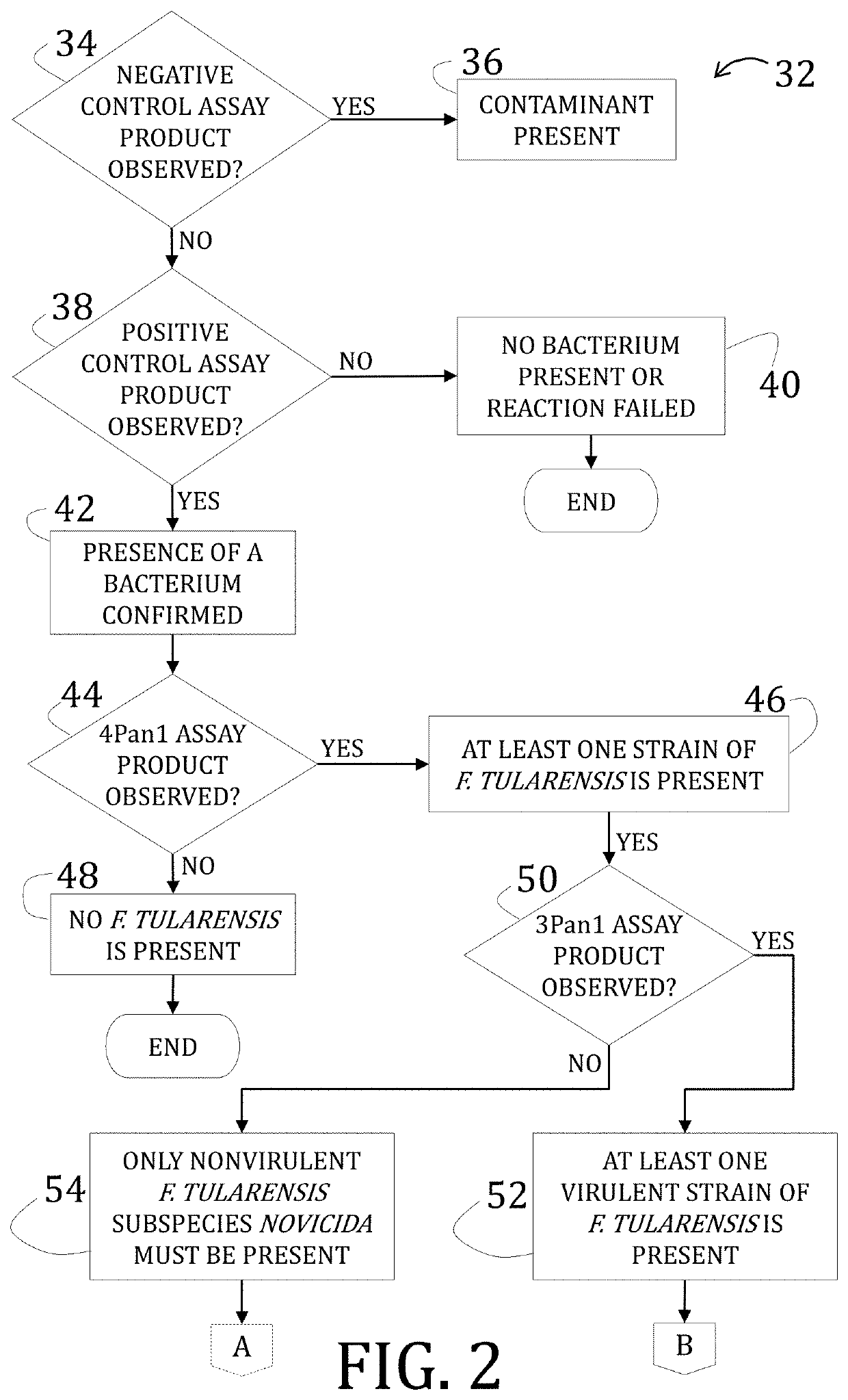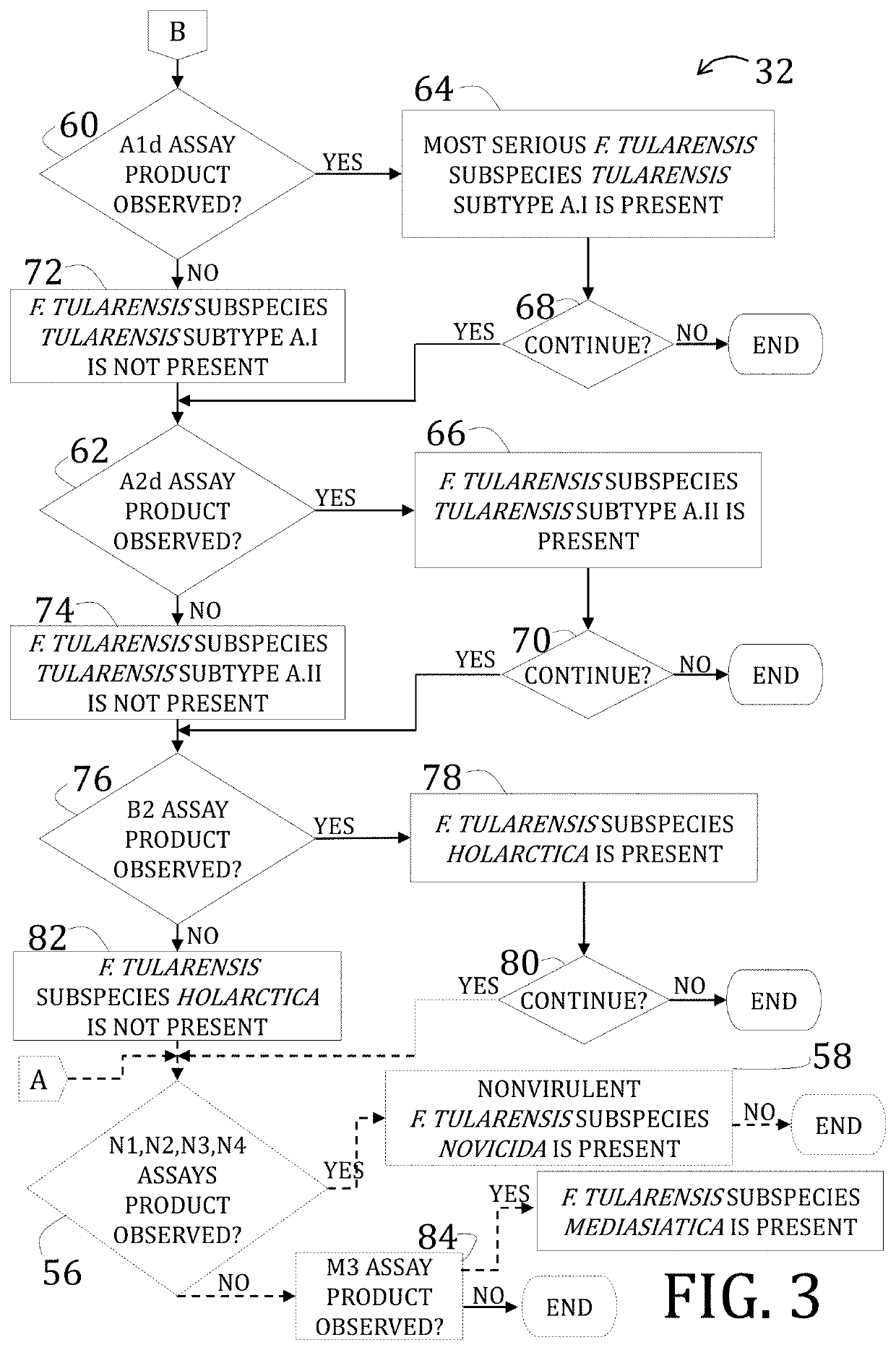Methods of detecting and typing pathogenic strains of francisella tularensis
a technology of francisella and pathogenic strains, applied in the field of infectious bacteria detection, can solve the problems of hematogenous spread and eventual acute renal failure, lack of capability, and complicating positive, so as to improve throughput and accuracy.
- Summary
- Abstract
- Description
- Claims
- Application Information
AI Technical Summary
Benefits of technology
Problems solved by technology
Method used
Image
Examples
example 1
[0080]Limit of detection (“LOD”) ranges were dependent on fluorophores and quenchers utilized in the probe and the qPCR instrument used.
[0081]The LOD for the F. tularensis species-, subspecies-, and subtype-specific singleplex qPCR assays ranged from 1 fg to 5 fg of F. tularensis genomic DNA on the JBAIDS or LIGHTCYCLER (F. Hoffman-La Roche AG, Basel, Switzerland), as illustrated in FIGS. 7, 8, 9, 10, 11, 12, and 13. The graphically illustrated data of these figures are provided in Tables 2-8, respectively, below.
[0082]Ten-fold dilutions of F. tularensis genomic DNA of certain tests resulted in a linear standard curve for all of the F. tularensis species-, subspecies, and subtype-specific singleplex qPCR assays, which are specifically illustrated in FIGS. 12A, 14A, 15A, 16A, 17A, 18A, and 19A.
[0083]As illustrated in FIG. 7 and provided in Table 2, below, the 4Pan1 real-time qPCR assay according to embodiments of the present invention detects all four F. tularensis subspecies, includ...
example 2
[0104]A multiplex “Tier 1” real-time qPCR assay was developed to detect all bacteria (universal 16S rDNA U16S target), all four F. tularensis subspecies including avirulent novicida (4Pan1 target), all three F. tularensis subspecies excluding avirulent novicida (3Pan target), and the most virulent F. tularensis strains, specifically subtype A.I strains (A1d target). Assessment of the limit of detection (LOD) for each of the targets in the “Tier 1” multiplex real-time qPCR assay on the 7500 Fast Dx cycler showed that the LOD was greater than 50 fg and less than 30 fg for the 16S rDNA (U16S) target, less than 10 fg to greater than 1 fg for the 4Pan1 target, less than 30 fg to greater than 10 fg for the 3Pan target, and less than 30 fg to greater than 10 fg for the A1d target with F. tularensis subspecies tularensis subtype A.I genomic DNA.
[0105]The LOD for 16S rDNA endogenous internal control in the multiplex qPCR assays ranged from 50 fg to 100 fg on the ABI 7500 Fast Dx (Applied Bio...
PUM
| Property | Measurement | Unit |
|---|---|---|
| fluorescent | aaaaa | aaaaa |
| Force | aaaaa | aaaaa |
| real time PCR | aaaaa | aaaaa |
Abstract
Description
Claims
Application Information
 Login to View More
Login to View More - R&D
- Intellectual Property
- Life Sciences
- Materials
- Tech Scout
- Unparalleled Data Quality
- Higher Quality Content
- 60% Fewer Hallucinations
Browse by: Latest US Patents, China's latest patents, Technical Efficacy Thesaurus, Application Domain, Technology Topic, Popular Technical Reports.
© 2025 PatSnap. All rights reserved.Legal|Privacy policy|Modern Slavery Act Transparency Statement|Sitemap|About US| Contact US: help@patsnap.com



